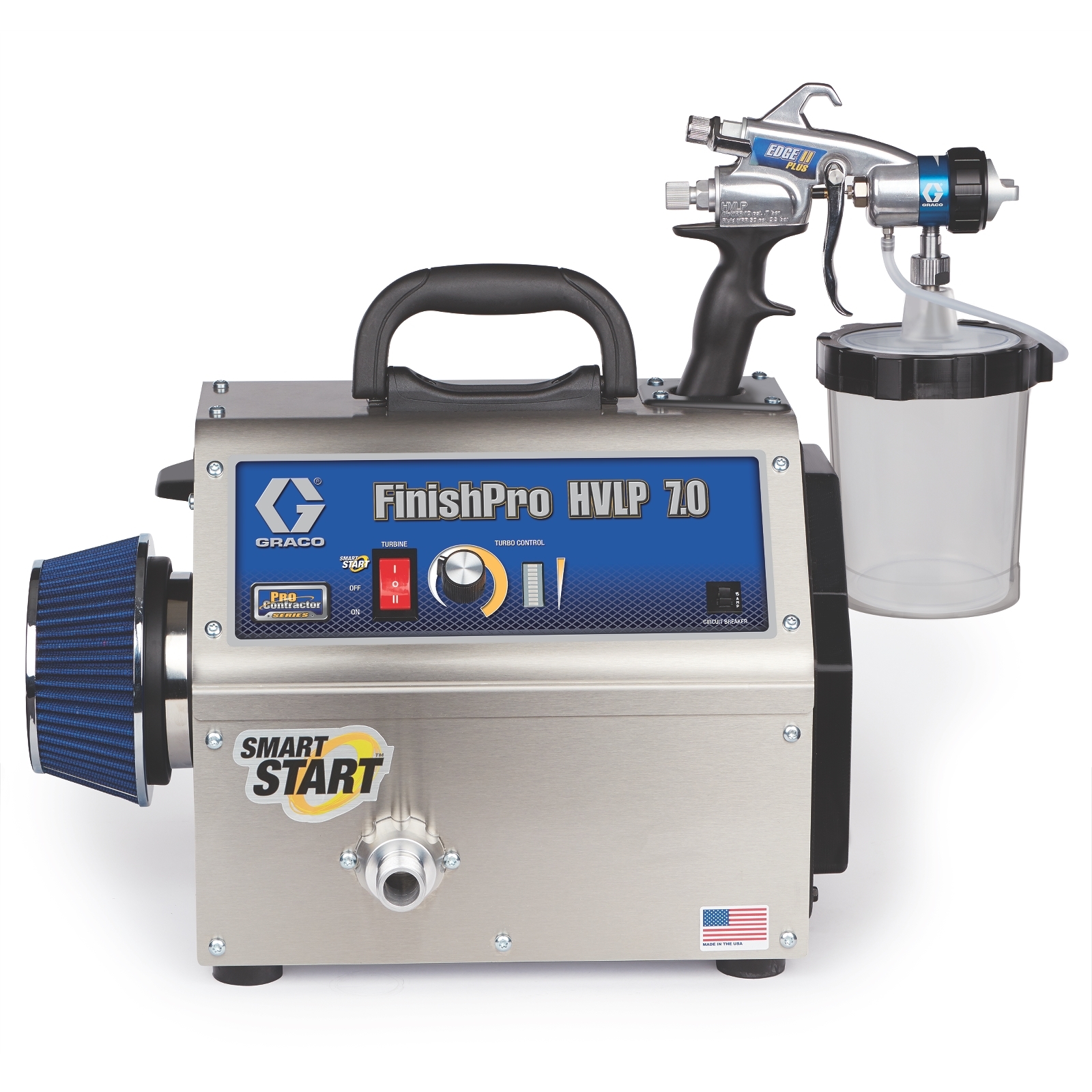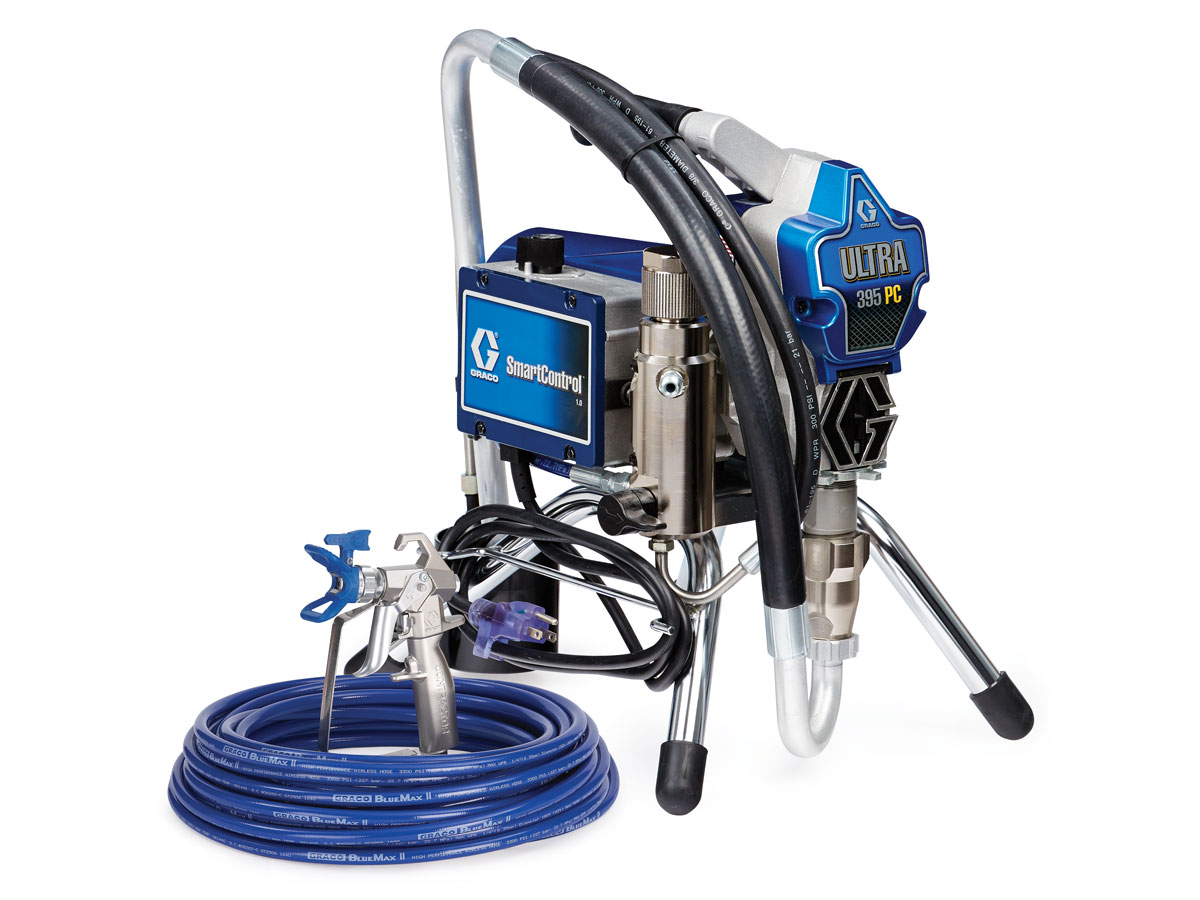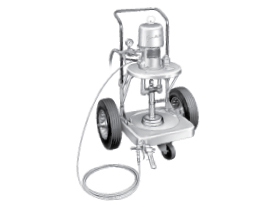Intro to Airless Paint Spraying
WATCH: What is Airless Spraying? (3:23)
In 1958, Graco invented portable airless spraying. This innovative process for spraying paint is more popular today than ever before thanks to continuing advancements in technology and how the different types of airless spray delivery methods have been improved over time on job sites around the world.
Since the technology was introduced over a century ago, professional contractors have preferred airless paint spraying for many reasons:
Airless spraying increases speed. Airless spraying is faster, so more jobs can be completed in less time, using less labor – plus, it’s great for jobs with a short weather window.
Airless spraying improves overall finish quality. Airless sprayers produce an even coat of paint (referred to as the mil build) on all types of surfaces, leaving a high-quality finish.
Airless spraying is also very versatile. Airless sprayers can be used for a wide range of coatings for both interior and exterior jobs and can easily be transported around job sites.
Today, there are four main types of spray delivery methods…
Air Spray
The first spray delivery method is Air Spray. These systems use highly pressurized air, created by a compressor, to atomize the fluid being sprayed and deliver it onto the work surface.
High-Volume, Low-Pressure (HVLP)

Another fluid spray method is High-Volume, Low-Pressure – or HVLP. These systems also utilize compressed air, but in a different way than standard air spray systems.
With an HVLP sprayer, a turbine delivers a large volume of air at a much lower pressure to atomize and spray the fluid. In fact, the unit must be 10 PSI or less at the air cap to qualify as HVLP.
These systems are designed for smaller fine finish jobs because they provide the least amount of overspray and unmatched precision forthe highest quality professional finish.
Airless Spray
The third spray delivery method is Airless Spray. This method differs from the previous two as these sprayers need neither a compressor or a turbine.
Airless spraying is the fastest and most versatile way to achieve professional painting results and spray the widest variety of materials, unthinned. In fact, using an airless sprayer is up to 10 times faster than using a brush, and at least four times as fast as a roller!
Airless spraying achieves this speed by atomizing, or breaking up fluid into small droplets, without the use of compressed air. Instead, fluid is pumped under high pressure through a spray tip. The fluid emerges from the tip as a high-speed solid stream – but when that stream hits the air, it becomes disrupted – and the fluid separates into very small droplets that form the spray pattern.
If you’ve ever placed your finger over the end of a running garden hose, you created a very simple form of airless spray.

Air-Assisted Airless

Finally, Air-Assisted Airless is the fourth delivery method. This system combines airless and air spray methods to deliver the finish quality of an HVLP sprayer, with the speed and efficiency of an airless sprayer. This is achieved by adding compressed air to an airless spray fan pattern.
With air-assisted airless spraying, material is delivered to the gun at 20-40% lower pressure than traditional airless spraying (500 – 1500 psi vs. 1500 – 3000 psi) and is partially atomized through a small tip. Full atomization is achieved by adding a small amount of air (5 – 35 psi) to the edges of the spray fan – resulting in a softer pattern, more control, higher transfer efficiency, and less overspray.
So, what is airless spraying? Simply, it’s the fastest and most versatile way to achieve professional painting results.

Related Articles
Components of an Airless Paint Sprayer
Before spraying, understand how the primary components of a Graco airless paint sprayer work together to create a perfect finish with unmatched performance.
Choosing and Understanding Spray Tips
To help determine how thick of a coating you’ll be able to spray, it's important to understand the fan-width and orifice-size of a spray tip.
Airless Sprayer Safety
In order to ensure a safe working environment and avoid serious injuries, make sure you completely understand all elements of airless sprayer safety.
Spraying Techniques
Understanding and applying these basic spraying techniques will be the difference between a sloppy looking paint job and a professional one.
How to Start Up a Paint Sprayer
Proper start up of your paint sprayer is an important step to keep it running at maximum performance and efficiency, year after year.
How to Clean Up a Paint Sprayer
Making sure your paint sprayer is properly cleaned will help deliver a consistent, professional finish and a solid return on your investment.







